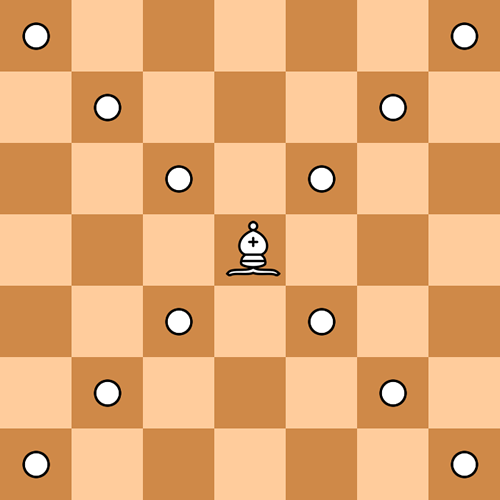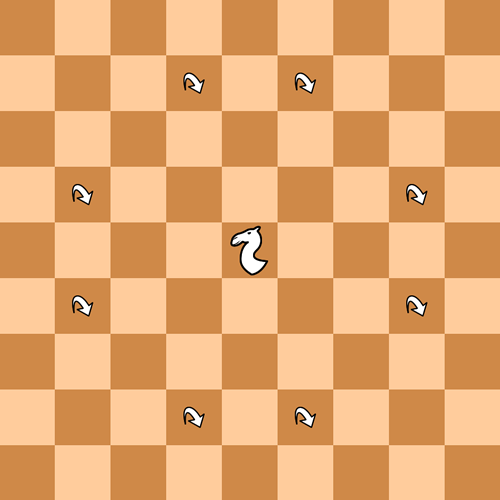Description
This game is a variant of Tamerlane 2000.
The fact that strong pieces can only appear after promotion gives an original taste to this large Chess Variant but can appear as too slow to some modern players. Those looking for strategies around "bloody" battles, may appreciate a simple this variant where Princes and Ship are replaced by Queens and Eagles (i.e. Gryphons) from the initial set-up.
Rules
Initial setup
The board has 11 x 11 squares. The 11 files respect the original configuration of Tamerlane's Chess with a central King. The 11 ranks give more space to the game allowing to arrange the piece before struggling. Moreover, they place Bishops and Camels on same colors allowing attack of opposite counterparts and mutual protection.

There are 28 pieces per side: 1 King, 2 Queens, 2 Gryphons, 2 Bishops, 2 Knights, 2 Rooks, 2 Elephants, 2 Camels, 2 Cannons and 11 Pawns.
Pieces
King
![]()
Moves as in usual Chess, except there is no castling.

Queen
![]()
Exactly as in usual Chess.

Bishop
![]()
Exactly as in usual Chess.

Knight
![]()
Exactly as in usual Chess.

Rook
![]()
Exactly as in usual Chess.

Elephant
![]()
Moves one or two squares diagonally. When an Elephant moves two squares, it is allowed to jump, i.e., the intervening square does not have to be empty. The Elephant moves as the combined Alfil and Firzan (Ferz) from Shatranj, two pieces which were also present in mediaeval Chess and have disappeared with the birth of modern moves for Queen and Bishop.

Camel
![]()
As in Metamachy, a well known piece from medieval Muslim great Chess like Tamerlane's Chess. It jumps to the opposite case of a 2x4 rectangle, like an extended Knight. No matter what intermediate cases contain. Note that it always stays on the same color of square.

Cannon
![]()
moves without taking like a Rook, but it takes by going in a straight horizontal and vertical line and jumping over exactly one piece. When a Cannon takes a piece, there must be exactly one piece between the original and final square of the Cannon's move - this piece may be of either color. (This is identical to the move of the Cannon in Xiangqi.)

Gryphon
![]()
Moves one square diagonally and then, goes away of an indefinite number of cases vertically or horizontally. It is authorized to go only one square diagonal. It can not jump and the unobstructed path must start with the diagonal movement. This piece is almost as powerful as the Queen and is inspired by the Giraffe from Tamerlane's Chess and the Aanca from Alfonso X's Grande Acedrex. In my other more recent chess variants, this piece is called an Eagle.

Credits
Jocly implementation
- Development: Jérôme Choain (@jcfrog)
- Graphic design: Jérôme Choain (@jcfrog)
- Rules and descriptions: Jean-Louis Cazaux and Jérôme Choain (@jcfrog)
